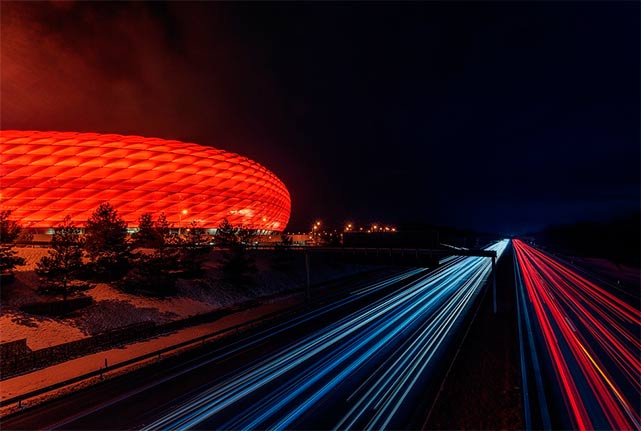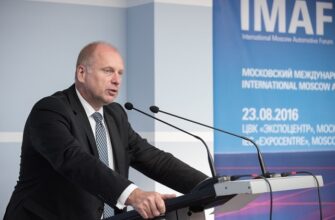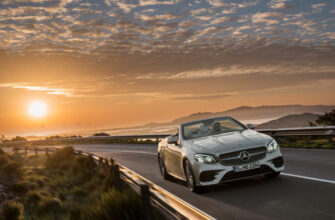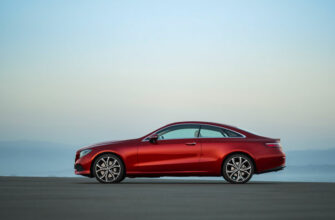According to the Association of European Businesses 129’900 new cars were sold in October 2015 in Russia, which is 38.5% less than in October 2014 and 7.7% less than in September 2015. Leadership on sales volume in October is retained by brand Lada (20’600 sold cars (-46%)), the second place is occupied by KIA – 14’400 (-17%), followed by Hyundai – 14’100 (-8%) and Renault – 10’800 (-35%). For 10 months of this year it was sold 1.32 mln cars that is 33.6% less than in the same period in 2014. Lada cars were sold in total 224,0 mln units (-30%), KIA – 134,1 thousand (-13%), Hyundai – 133,5 thousand (-10%), and Renault – 98,1 thousand (-37%).
Three leading positions on sales volume in Russia belong to such companies as Avtovaz-Renault-Nissan, Hyundai-KIA and VW Group.
Despite the fall in consumer demands for cars, dealers have continued developing networks until recently. According to the Researching Center “Effet”, today the total number of dealerships in Russia is roughly 4620 units. Most of them are located in Moscow, St. Petersburg and Yekaterinburg, which have population exceeding 1 million people, according to the Ministry of economic development of Russian Federation on the 1st January 2015 (Table 1).
Table 1. Distribution of dealer centers in cities of Russia
| № | Name of the city | Number |
| 1 | Moscow | 602 |
| 2 | Saint-Petersburg | 288 |
| 3 | Ekaterinburg | 124 |
| 4 | Krasnodar | 113 |
| 5 | Nizhni Novgorod | 107 |
| 6 | Rostov-on-Don | 102 |
| 7 | Kazan | 99 |
| 8 | Samara | 84 |
| 9 | Chelyabinsk | 84 |
| 10 | Ufa | 80 |
| 11 | Voronezh | 77 |
| 12 | Tyumen | 76 |
| 13 | Perm | 72 |
| 14 | Krasnoyarsk | 71 |
| 15 | Moscow region | 70 |
| 16 | Tolyatti | 69 |
| 17 | Naberezhnye Chelny | 65 |
| 18 | Saratov | 65 |
| 19 | Novosibirsk | 64 |
| 20 | Volgograd | 57 |
| 21 | Omsk | 56 |
| 22 | Orenburg | 56 |
| 23 | Ryazan | 53 |
| 24 | Yaroslavl | 51 |
| 25 | Izhevsk | 49 |
| 26 | Surgut | 49 |
| 27 | Kemerovo | 46 |
| 28 | Kemerovo | 45 |
| 29 | Irkutsk | 44 |
| 30 | Magnitogorsk | 43 |
| 31 | Penza | 43 |
| 32 | Stavropol | 42 |
In mass segment brands the greatest negative impact in 2015 experienced the following dealer network brands: Peugeot, SsangYong and Fiat.The falling of car sales in crisis showed that market participants have overestimated a potential of market development, because importers` objectives in sale volumes and market shares had a negative impact on dealers, reducing average figures for each point with a growth of common indicators across networks. Analysts of the company “Atlant-M” note that this tactic hasn`t been typical for such importers as Toyota, Jaguar Land Rover and Mercedes-Benz, which, accordingly, do not have virtually bankruptcies and closing points. At the same tome General Motors has been forced to close 100 Chevrolet brand dealerships and over 35 Opel brands in 2015.
After the ruble falling domestic brands Lada and UAZ, by contrast, have appeared to be more competitive due to high level of production localization. Thus, UAZ expanded its dealer network much more than other brands up to167 dealer points. AVTOVAZ, which has the largest dealer network in Russia (more than 360 units), continues its optimization, opening dealerships in Metropolitan areas. AVTOVAZ focuses on large cities as the most promising for such models as Lada Vesta and XRAY. Moscow and St. Petersburg, according to manufacturer, has the most significant growth potential, but today its sale share there amounts to only 6% and 9% respectively.
From the view point of “Atlant-M” analysts, AVTOVAZ and UAZ networks require substantial revision to improve competitiveness with other networks in terms of dealer’s quality, staff and sometimes location.
So, a solution of major Russian car dealer “Rolf” to include in its product range domestic brand UAZ will increase, in the opinion of “Atlant-M”, an average quality of dealer network, provided that some non-competitive dealer’s points will be closed. For “Rolf” companies group UAZ is the first national brand in companies` portfolio. Start of UAZ SUVs sales is scheduled for January 2016. “Rolf” revenue (its range consists of 17 automotive brands: Audi, Chrysler, Ford, Hyundai, Toyota, Skoda, Mazda, Alfa Romeo, Jaguar, Jeep, Land Rover, Lexus, Mercedes-Benz, Mitsubishi, Porsche, Renault, Smart) for the first six months of 2015 decreased by 15% compared to the same period of the previous year and amounted to 53,2 bln RUR. However, UAZ sales stay stable, despite ruble weakening. According to AEB, UAZ sales for the first 10 months of 2015 increased by 2% and amounted to 37’778 units. Despite the fact that sales slowdown in October were 23%, this was less fall than market as a whole (-38, 5%). Only in October 5’270 UAZ cars were sold and 2’298 of them were Patriot models. UAZ dealer center will be opened in a complex “Rolf Altufevo”, where at the moment have already presented such brands as Hyundai, Mitsubishi, Jeep, Chrysler, Alfa Romeo.
Among cars presented on mass market the most dynamic network has Datsun brand that has only 38 dealers in the main Russian regions at the beginning of the year and expanded its network up to 63 sale points in November 2015. Dmitry Busurkin the Director of Datsun brand in Russia said that the brand planned to increase number of dealerships up to 70 units by the end of the year.
Some dealers in Russia that sell mass brands also use a situation of crisis to terminate inefficient dealers and strengthen their networks by bringing in more successful partners. Thus, Kia brand is a sales leader among foreign brands on Russian market, which has increased the number of dealer outlets up to 173 units by November 2015. Kia Motors Rus press service announced: “Russia is a priority market for Kia Motors Company at a global level, we strive to provide our presence in all middle and big Russian cities. We develop dealer network and invest in Russian market, despite the unstable economic situation, because we believe that a crisis is a time of opportunity. Sustainable business indicators suggest that Kia dealer network in Russia is working effectively and we still have potential to expand our presence in smaller towns”.
In 2015, Hyundai also increased its dealer network up to 146 units in November 2015, according to Research Center “Effect”. Number of dealers, which brands have stable demand in crisis because of their affordability for consumer mass market, also increased: Renault (up to 181 dealers), Skoda (up to 134 dealers). Overall, dealers of foreign cars of Russian Assembly Hyundai, Kia, Volkswagen and Skoda are in better position than those dealers that buy cars abroad. An important factor in their development is an availability of state programs that help to support a demand.
Table 2. Distribution of dealerships` number by car brand
| № | Brand | Number |
| 1 | Lada | 362 |
| 2 | Renault | 181 |
| 3 | Kia | 173 |
| 4 | UAZ | 167 |
| 5 | Lifan | 157 |
| 6 | Nissan | 156 |
| 7 | Chevrolet-Niva | 155 |
| 8 | Hyundai | 146 |
| 9 | Chevrolet | 137 |
| 10 | Skoda | 134 |
| 11 | Volkswagen | 134 |
| 12 | Mitsubishi | 133 |
| 13 | Opel | 124 |
| 14 | Ford | 123 |
| 15 | GAZ | 123 |
| 16 | Chery | 112 |
| 17 | Toyota | 111 |
| 18 | SsangYong | 110 |
| 19 | Daewoo | 98 |
| 20 | Geely | 95 |
| 21 | Mercedes-Benz | 89 |
| 22 | Haima | 81 |
| 23 | Great Wall | 76 |
| 24 | Mazda | 74 |
| 25 | ZAZ | 71 |
| 26 | Citroen | 66 |
| 27 | Fiat | 66 |
| 28 | Audi | 65 |
| 29 | Datsun | 63 |
| 30 | BMW | 62 |
| 31 | Suzuki | 61 |
| 32 | Peugeot | 60 |
| 33 | Land Rover | 56 |
| 34 | Jaguar | 55 |
| 35 | Changan | 54 |
| 36 | Honda | 51 |
| 37 | Isuzu | 51 |
| 38 | Subaru | 51 |
| 39 | Lexus | 49 |
| 40 | Chrysler | 48 |
| 41 | Iveco | 48 |
| 42 | Jeep | 48 |
| 43 | Volvo | 44 |
| 44 | Dongfeng | 37 |
| 45 | Dodge | 31 |
| 46 | Brilliance | 28 |
| 47 | Porsche | 25 |
| 48 | JAC | 23 |
| 49 | Smart | 23 |
| 50 | Cadillac | 22 |
| 51 | Infiniti | 19 |
| 52 | Mini | 18 |
| 53 | FAW | 13 |
| 54 | Alfa Romeo | 12 |
| 55 | ChangFeng | 8 |
| 56 | Bentley | 7 |
| 57 | Haval | 5 |
| 58 | Hawtai | 5 |
| 59 | Luxgen | 5 |
| 60 | Maserati | 5 |
| 61 | Bugatti | 3 |
| 62 | Ferrari | 3 |
| 63 | Rolls-Royce | 3 |
| 64 | Acura | 2 |
| 65 | Aston Martin | 1 |
| 66 | Lamborghini | 1 |
In crisis premium segment remains to stay attractive for dealers, because of steady demand and high margins. Such brands as, for example, Jaguar, Alfa Romeo, Lexus, Mercedes-Benz and Land Rover increased the number of their dealer outlets in 2015.Another significant trend that is gaining popularity in crisis is an expanding of automobile dealers’ product lines by incorporating Chinese car brands. Thus, every third dealership opened in 2015 offers Chinese cars. Most actively develop their networks such brands as Dongfeng, Brilliance and Haval that recently appeared on Russian market.
“Russian automobile dealers” Association makes a prediction that some companies on Russian market will change their business models to deliver cars on pre-orders. Thus, Japanese company Honda will cease centralized supply in Russia from January 2016, offering dealers to order cars directly at company’s plants. Products supplied directly from plants may be increased in price; accordingly, implementation of new supply strategy may lead to withdrawal a number of brands from Russian market. Problems in banks financing, high currency risks and import tariffs will inevitably increase cars costs and consequently decrease demand for brand products. Only few dealers will be able to perform functions of importing and working on new supply scheme without sub-distributor.Number of dealerships in Russia in general is redundant, because an initial expectation of sales volume has been 3.5 mln new vehicles that has not match the current situation on the Russian car market. Expected sales in 2015-2016 are 1.5 mln cars. According to “AutoBusinessReview” magazine, average dealerships sales fell to a 10-year low and will amount to 350 cars by the end of 2015. Analysts of “Atlant-M” suppose that a number of dealers in the next few years will be reduced (approximately by 25-28%). In these periods the main priority becomes maintaining profitability of their business by reducing expenses and increasing demand for their service. At the moment a glut of dealers on automotive market (30-35% depending on segment) is caused due to brands competition for market shares and opportunities to take profitable niches.
According to “Russian automobile dealers” Association, not all dealers will continue its functioning until full Russian automotive market recovery; in the next few years every fourth dealer is expected to be closed.




